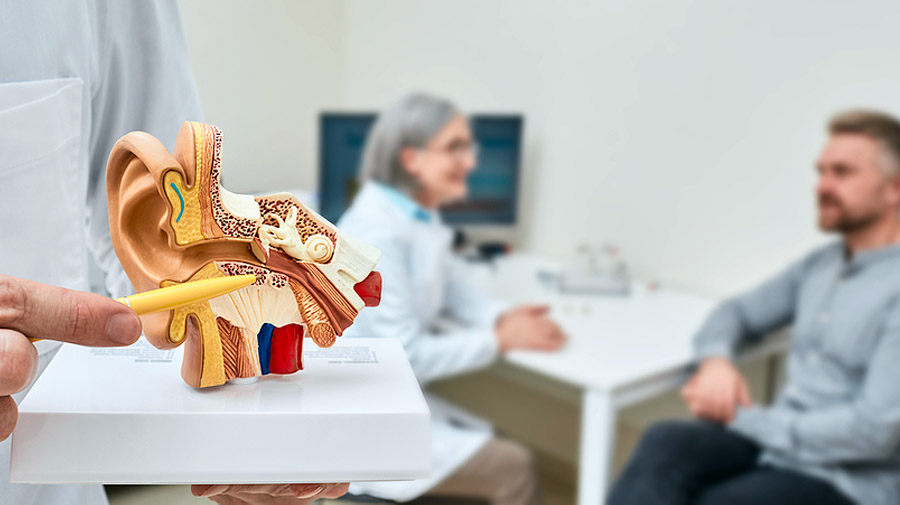A common misconception is that we hear with our ears, when in fact, we hear with our brains. The ears are responsible for helping to amplify the message on the way to the nerves. Understanding this process will help you to understand why wearing hearing aids can’t make your hearing “perfect”.
Sound is first manipulated by the shape of the ear which helps to funnel sound into the ear canal. That is why sometimes you see people cup their ear in an attempt to hear better. Once the sound travels down the ear canal it arrives at the ear drum. The ear drum then vibrates which starts a mechanical process. The vibration of the ear drum moves the bones of the middle ear (malus, incus and stapes). These bones are connected as a chain with one side attached to the ear drum and on the other side to the oval window. The size difference between the ear drum and oval window allows for the sound to be amplified organically simply by going from a larger vibration surface to a smaller one! In summary, the vibration of sound triggers a mechanical process which then triggers an electrical process at the other side of the oval window.
A common misconception is that we hear with our ears, when in fact, we hear with our brains.
The oval window is the opening to the cochlea which is considered the inner ear. The inner ear consists of hair cells which help to fine tune speech quality. The vibration of the oval window creates a wave inside the cochlea which stimulates the auditory nerve. The hair cells expand and contract to help further this process to send electrical impulses up the nerve to the brain. This is all considered peripheral hearing. For the sake of brevity I will save the most complex process of auditory processing for another day.
Just glimpsing at the complexity of the peripheral hearing system you can start to understand why people sometimes struggle with hearing aids. The most common hearing loss as we age is considered sensorineural hearing loss. This is due to lack of inner hair cell function which takes away the sharpness of speech. The goal of hearing aids is to increase the signal to account for the lack of expansion and contraction of the hair cells. Although effective, it’s hardly a replacement for the function of damaged hair cells.
Contact the Visiting Audiologists today to schedule an appointment.

